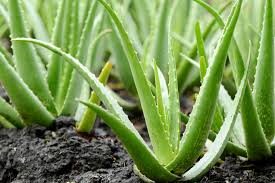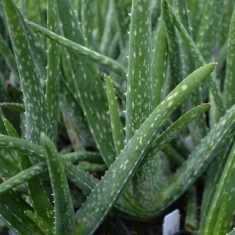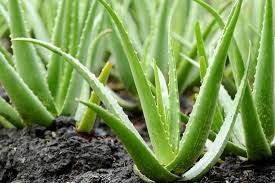Aloe Vera comes from the Liliaceal family, where there are about 360 species. It is a cactus-like plant with yellow flowers that grows in hot, dry climates. It originated in Africa, and is now grown in warm climates around the world, like Asia, Europe and America. It is used in cosmetics, as well as for its medicinal properties. These products are made from the mucilaginous tissue in the center of the aloe vera leaf. The center of the leaf is bitter, yellow and commonly known as the sap, or juice of the aloe vera plant.
The medicinal uses of Aloe Vera include anti-inflammatory and anti-arthritic activity, as well as, antibacterial and hypogylcaemic effects (Vogler, 1999). It contains many active elements, including, vitamins, minerals, enzymes, sugars, lignin, saponins, salicylic acids and amino acids. The gel contains vitamins like, Vitamin A, C, and E, as well as Vitamin B1, niacin, B2, choline and folic acid (Nazir, 2017). The gel is used in the preparation of health drinks, and food products, like milk and ice cream. It is also used as a flavoring component or a preservative for various foods.

Due to the plants high nutrient content, it has been shown to be very beneficial for the body. Here are a few of some of the valuable properties:
Arthritis:
Aloe Vera has been shown to repair arthritis-damaged tissue, since it contains analgesic, an anti-inflammatory agent (Nazir, 2017). It can be taken orally applied externally to help repair the damaged tissue and detoxify the area. Likewise, it can help reduce pain associated with arthritis and swelling.
Heals Wounds:
Since Aloe Vera has many anti-bacterial properties, it has been shown to heal wounds. It has been used to dress wounds for centuries, reducing burns, restoring skin and pain. Research has shown that the juice seals the wounds while drawing blood to the wound, improving the healing properties.

Immune System:
Aloe Vera has natural detoxifying properties that can cleanse the digestive system and circulatory system. This can help improve the absorption of nutrients and consequently improve the immune system. It has also been shown to inhibit free radicals.
Anti-aging:
Some properties in Aloe Vera helps bind moisture into the skin. Aloe stimulates fibroblast, which produces the collagen and elastin fibers making the skin more elastic, reducing wrinkles (Surjushe, 2008). It helps the skin stay moisturized for longer periods of time, while hardening skin cells and tightening pores. It has also been shown to have an anti-acne effect on the skin, due to the antibacterial properties.
References
